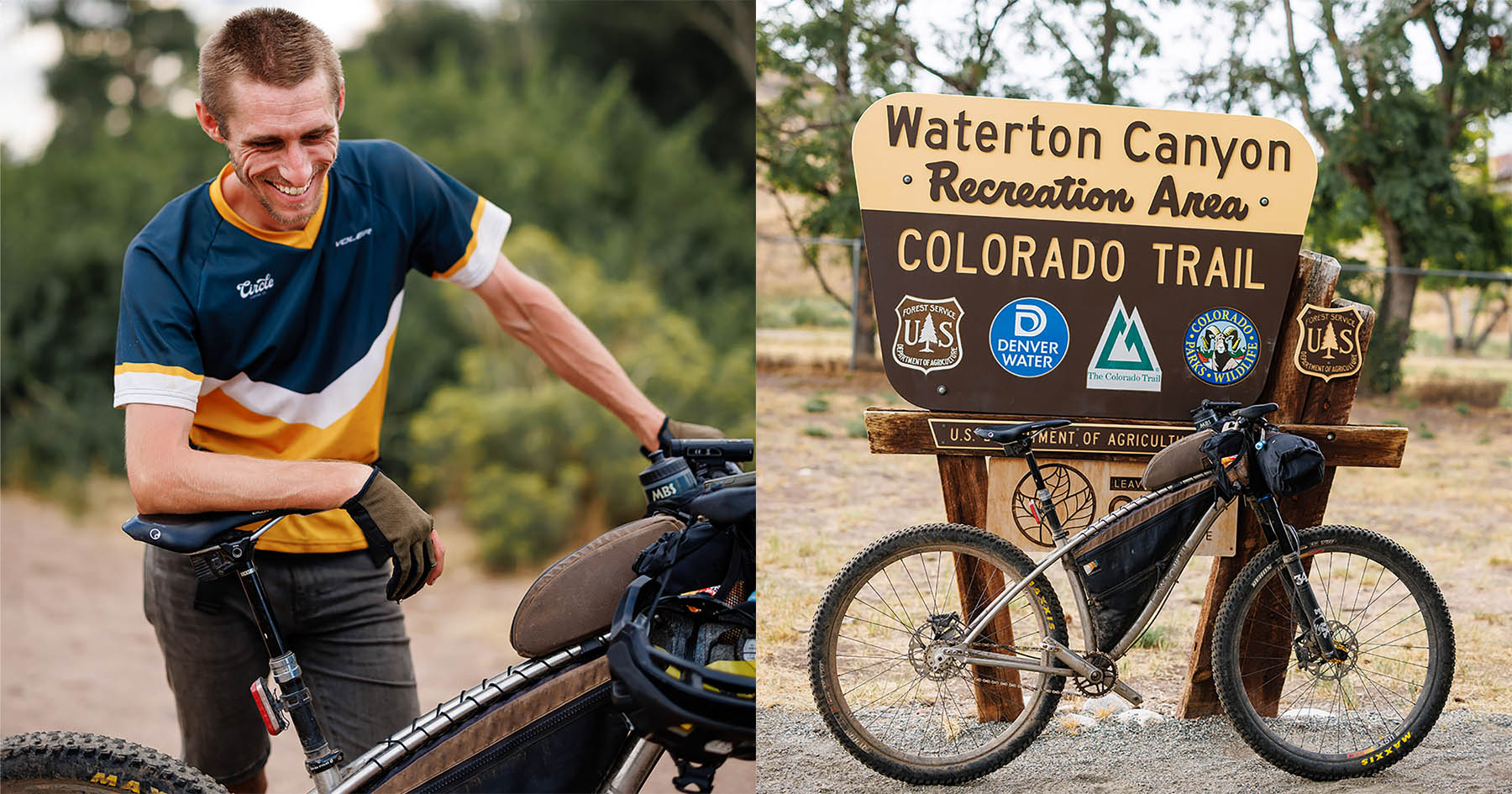PROTECT YOUR DNA WITH QUANTUM TECHNOLOGY
Orgo-Life the new way to the future Advertising by AdpathwayIn a surprising turn of events, lightning led to large delays and then ultimately the cancellation of the second set of motos at the first SMX Playoff round at Charlotte. For this sport, such a decision is rare. What was the timeline and the thought behind it? Feld Motorsports Senior Director of Operations Mike Muye called into Steve Matthes' PulpMX Show on Monday night to talk about it.
Steve Matthes: Alright. Mike Muye is on the line, director of Supercross for Feld. So, let’s talk about the cancellation of the (second half of the) race. It hasn't happened very much in this sport. Take us through the timeline of the lightning, the race call, the things that led to the decision to cancel the second mains.
Mike Muye: Yeah. I mean, the timeline begins at the start of the day, really. We had been monitoring the weather all day. Initially, it looked like there could be something coming in around race start time at three. But it was a low percentage and a low accumulation amount, throughout the time of the race. We continued to monitor and had our contingency plans for formats in place. And then, as the event grew closer to 2:30, it kinda honed in on that 5 p.m. timeline. So, the venue has a situational room that they work out of. They have local authorities and a meteorologist all involved in that room. And then we have our show control area that has representatives from Feld, MX Sports, AMA, track construction, timing and scoring, broadcast, you name it. We're all in a room together and continually monitoring that. And then from there, it was really e sporadic storm, right? We're pretty used to, unfortunately, dealing with weather- and weather-related events. But this one was unique in the fact that we knew it was coming, but it went from 11 mile hit to a one-mile hit, meaning where the lightning was striking. So, obviously, that that put up our radar, no pun intended. That's when we started to evacuate the building and put everybody underneath the grandstands. The storms kept populating over top of us with no real rhyme or reason to it, which makes it difficult to plan when we'll be able to get bikes back on the track.
We kinda got through the first twenty, thirty minutes of that. We use a service called WeatherTap, and in conjunction with the venues, radar systems, and consumer based programs to give us a holistic picture of what we're looking at, we could see a window in time where we might be able to get the remainder of the race in. The teams got together and discussed cutting down the race times to fit in that window. But then as the weather kept populating over us, it pushed us further back, further back, further back. And at that point, we knew, “Okay, we need to make adjustments because we're running out of out of daylight.” And we started looking at options. One, cutting down some of the big jumps. We knew that we were gonna have to do that. So, that big double (and) the big triple was already on the radar as something that we're gonna work on. But then as it got later, we started realizing, “Well, okay, now we're battling daylight." Obviously, it’s pretty dark as it is. The stadium isn't fully lit when we’re talking about that outdoor motocross section. So, we started looking at options that allowed us to cut out the outdoor motocross section.
Oh, okay. Jeez that would have been interesting.
Yeah, right. You can start to see where this is heading. We're weighing all these different scenarios in order to get the race in. And meanwhile, the clock just keeps ticking. Every time we take a look at the radar, it's still slowly moving towards us, and the window is closing. Meaning, you know, we started out with like an hour and forty minute window and then as the storms were getting bigger, that hour and forty minutes became an hour and thirty, hour and twenty, hour and ten minutes that we had to get the races in. So, we started looking at options to cut out that outdoor section and as we're walking through that, we realized the amount of time that that's going to take to build, compiled with the other track construction items that we need to do, compiled with time to get the riders ready and to bring the fans back in, we didn't have confidence that we would be able to get in all three races at that time. So that's when the conversation started, you know, about calling it. We consulted internally, the AMA, ourselves, MX Sports, and with the venue, and then got feedback from the race teams as well who have been providing feedback throughout. And, overwhelmingly, everybody was in support of the decision.
Yeah. It seemed like the managers and riders I talked to were fine with it. They were saying that they wanted them to call it. You know? So, I think on that end of things, you guys had support, from teams.
Yeah. We did. And even talking through it today, you know, we always Monday quarterback ourselves, considering all the different scenarios and how it ultimately played out. You know, we feel we made the right decision. Talking with the OEMs and the race teams and the riders, they all feel that we made the right decisions. Now, we're still the sport that races in the rain, right? There's no question about that. But when you're talking about safety on multiple levels, you know, the decision always has to be safety first and foremost, and that's the decision we made here. Obviously, it might not always be the popular one, but it's the one that, as stewards of the sport, you have to make and live with.
So, when you see lightning in the area, it's thirty minutes is the hold? Like, is that and we went through two of those from what I understand?
Yeah. So, we went through several actually. It resets the clock. Now at a NASCAR facility, which is essentially where we're at, it's a little bit different than an NFL facility. So, yeah, if the storm is moving away, it gives us a little bit more flexibility than an NFL stadium where it just resets, that's it, the storm can be completely away, and it's still thirty minutes. We had a little bit of flexibility, but because of the volatility of it and lightning strikes popping up within the perimeter essentially unannounced, it made it to where, yeah, we're going to wait the thirty minutes. And that's that. And, you know, ultimately, it's the venue's decision when and if we can start racing. And that's really where the conversation predominantly was leaning to--back and forth communicating with the venue. What's their comfort level? What do they see? And they have a professional meteorologist on hand and we're getting real time feedback from them.
I know there's probably fans of the stands or in the pits that are like, “Dude, I could see blue skies.” But I've heard that all these sporting venues have gotten better at knowing there was a lightning strike exactly when, exactly where, better than they maybe were years earlier.
Yeah, and that software that we use, WeatherTap, you know, it's a subscription based online weather service that a lot of other professional sports, a lot of other venues use, and it's very accurate down to within, my understanding, within a couple 100 feet. So you can actually see the strikes popping up. And on that radar, there's I think it's a six-mile, eight mile, and a 10 mile cone, and you can expand that as you need to see where they're striking and what range they're striking in. But you can also see strikes as they're coming at you. So, we knew that we had a pretty large cell coming straight for us.
As I've said on my shows, I'm not gonna come down on you guys for not renting, spending a lot of money on lights, just to have them in case you need to set them up, in case there's a need. This is not feasible. Right? I mean, I know this, but just for the record, having lights is super, super expensive. It's just not feasible?
It's not feasible. If we had a wide (time) window, we would have been able to make some adjustments to the track and race within that, but the window just wasn't there. And now you're sending riders out to a new track that they haven't rode, it's just cutting out a section, but it does change their scope of the of the race, right? Also I don't know if it's fully realized, but it's a four lane drag strip. And then outside of those four lanes are the return roads where the NHRA cars return back to the starting line So, our track goes on, like, that rhythm lane, it goes on the far right side, and then the starting gates, they're on the return roads. All the lights for the venue itself are focused into the four lane drag strip. When we go to Vegas (drag strip), we actually have engineers that come in and climb a truss and reposition the lights. And that's how it works at those venues. To your point, the small circumstance or small possibility that we are faced with this weekend, it just wasn't something that made sense to have that done.
Can you take us through the ins and outs, the difficulties, let's say, of running it on Sunday?
So, we have about 3,500 credentialed folks, right? All of which have some level of function to put the event on. So, you would be looking at 3,500 additional rooms, 3,500 people that have to book new travel. You know, an extra day, which would be a Sunday, and then they probably would have to try and drive on Monday. Some of them might have other jobs. They need to be out on Monday or some other things that's coming. Plus, our TV trucks will quite often do an event in between our events, right? So, they might be doing a baseball game on Monday night. They might be doing a football game. Like, there's a there's a million different things that those trucks could be going and doing. So, the logistics of that aren't overly easy.
To listen to the entire interview with Mike go to the one hour mark:
Since this sport doesn't normally get delayed, it's never been delayed a whole day as far as I can remember, was this even something that you had even discussed with the track in advance eve? Would this have been like a 04:30 p.m. Saturday decision like, asking them if we are allowed to stay?
Yeah. It would have been a decision that we would have had to have discussed at that point and not one that we would take lightly. We have to take into account all parties. Not just ourselves. We're one part of the puzzle. So, we have to take into account the cost to the teams, to the riders. If we could say at the venue, what does that mean for the next venue that we're going to use? Right? So, we still have to get all that stuff out. And then on top of all that, what's it gonna be like on Sunday? And at what point is it gonna be okay to race? We know the track is in really bad shape. You know, weather could be coming potentially throughout the night. So, is Sunday really gonna be any better? Fortunately, we can race in mud, we've done it a thousand times, but at that point, what are we pushing for?
I was gonna ask you. We're talking about the track changes, but the track crew has to work under the same rules, they can't come in with equipment either until the lightning clears?
That's right. So, if you saw, they real quick went out and tried to seal off the big double and big triple. So, we got them out as fast as we could to do that and then brought them back in. But, then (with the strikes) they had to stay out just the same as the fans and the athletes. And then once we get clearance for them to go back out, which would be right around about the same time that the fans and the riders can return, that gives them an extra, like, six, seven minutes of work, which isn't anywhere near what we needed in order to rebuild the track. So that's where a lot of the time came from, is how much time it would take to make the track safe and raceable for everybody before they got out there.
Besides all this, we had a hurricane come through for about five minutes. Good god. The wind. The wind!
Yeah, as soon as that (wind) came, we knew that the weather was coming. That went all hands-on deck, securing the banners, tuff blocks, anything that could possibly move, our entire team went for. It just came out of nowhere. Like, you can't predict that, of course. But, yeah, that was crazy.
But, Mike, the SMX Next guys are gonna ride Friday. Right? They're gonna race Friday in Saint Louis to make up for the race that they missed?
Yeah. So, we'll have all the SMX Next guys. They're gonna race Friday in Saint Louis in conjunction with the usual Friday schedule. Yep. And then they'll race, obviously, again on Saturday. So, it'd be a good experience for those kids.


 2 days ago
2
2 days ago
2

















 English (US) ·
English (US) ·  French (CA) ·
French (CA) ·